Two Case Studies for Office to Residential Conversions
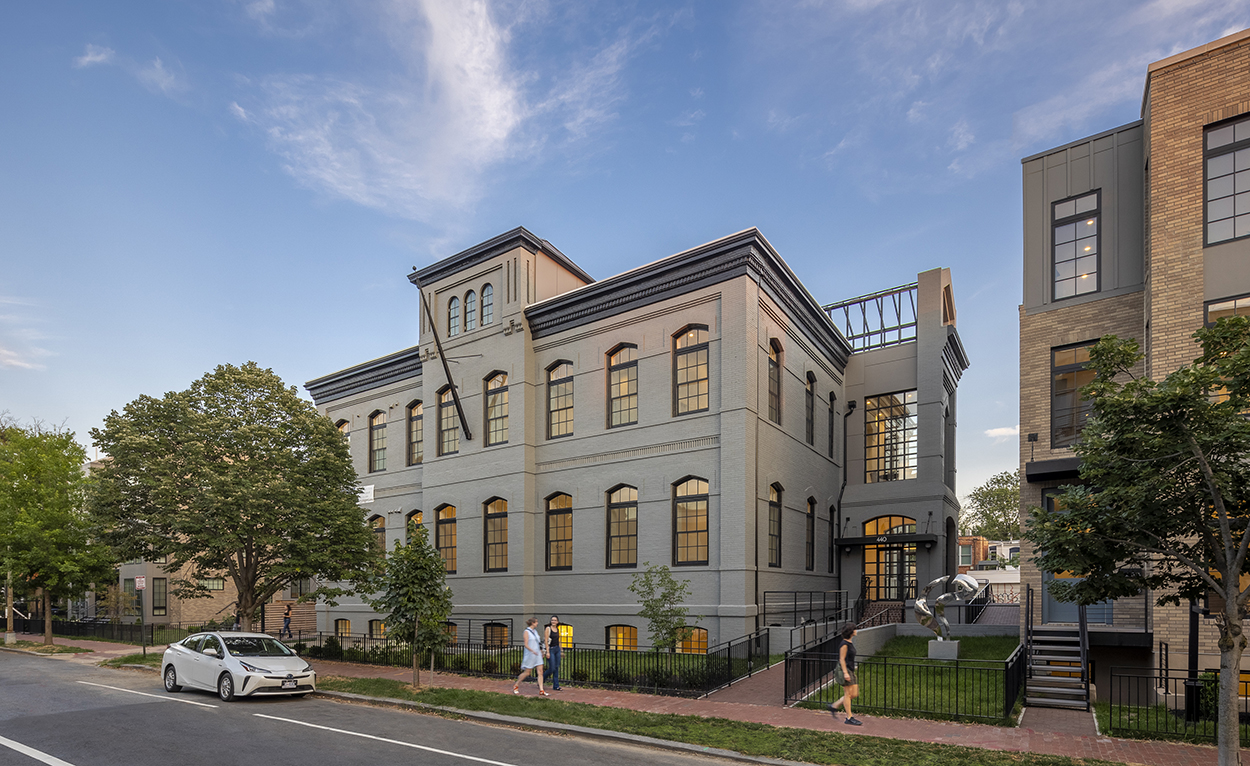
There’s a lot of buzz about Office to Residential (“O2R” if you’re in the know) conversions, particularly in downtown areas where there are high office vacancy rates. Converting the typical downtown DC concrete office building is problematic for a whole host of reasons we’ll cover depth in a future journal entry. However, we recently designed two O2R conversions where the stars aligned and the project made both financial and practical sense to undertake. While both projects had unique challenges, we were able to overcome them and deliver new residential units in areas desperately in need of housing.
The first project located the Tenleytown / Friendship Heights neighborhood was a boutique scaled mixed-use building containing office over ground floor retail. Close to American University, this project targeted students as rental housing with small apartments.
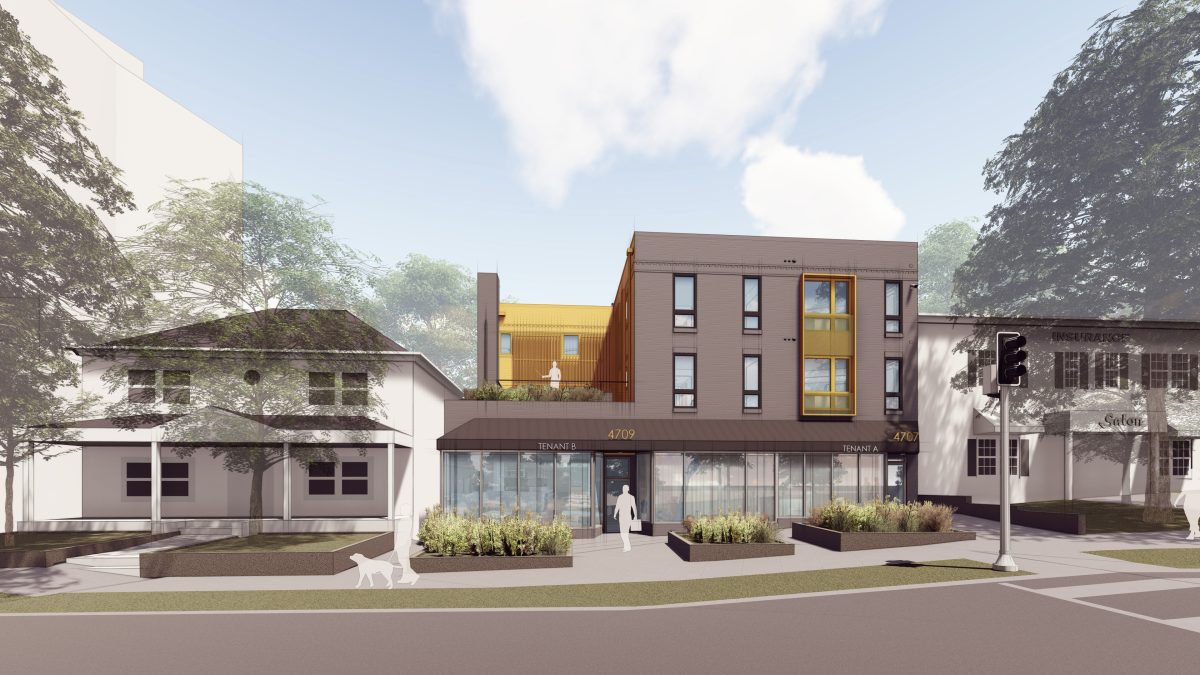
4709 Wisconsin Office to Residential Conversion
The second project, located in Shaw, is a condominium conversion of office and headquarters of a non-profit organization that had adaptively reused a historic schoolhouse.
Why These Worked
Sometimes older is better! In the case of 4709 Wisconsin, the original building was constructed in 1937. For the Schoolhouse of The Collection at R, the structure was originally constructed in 1883. It was converted to office use in 1985. These buildings predated the reliance on artificial ventilation systems, air conditioning, and artificial lighting. This is important because they both were configured with relatively narrow floor plates and had exterior exposures that provided direct ample access to natural light and ventilation. This remains critical even today to meet building code requirements regarding the interior environment. While there are some exceptions in the code which allows for internal bedrooms, we generally encourage natural systems and access to daylight as it promotes the health and well-being of residents. Exterior perimeter walls also allow for simpler routing of ventilation, outside air intake, and shorter exhaust duct pathways. This article from the Washington Post covers a lot of the issues with many O2R projects. Despite having an odd trapezoidal lot shape, the original office layout of 4709 Wisconsin combined with a large courtyard located on the northwest corner, and the narrow footprint worked well for small studio apartments and compact two-bedroom units. This mix was ideal for the target market of college students either living alone or with a roommate.
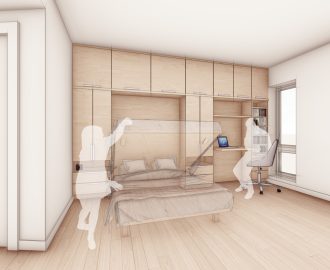
murphy bed built-in
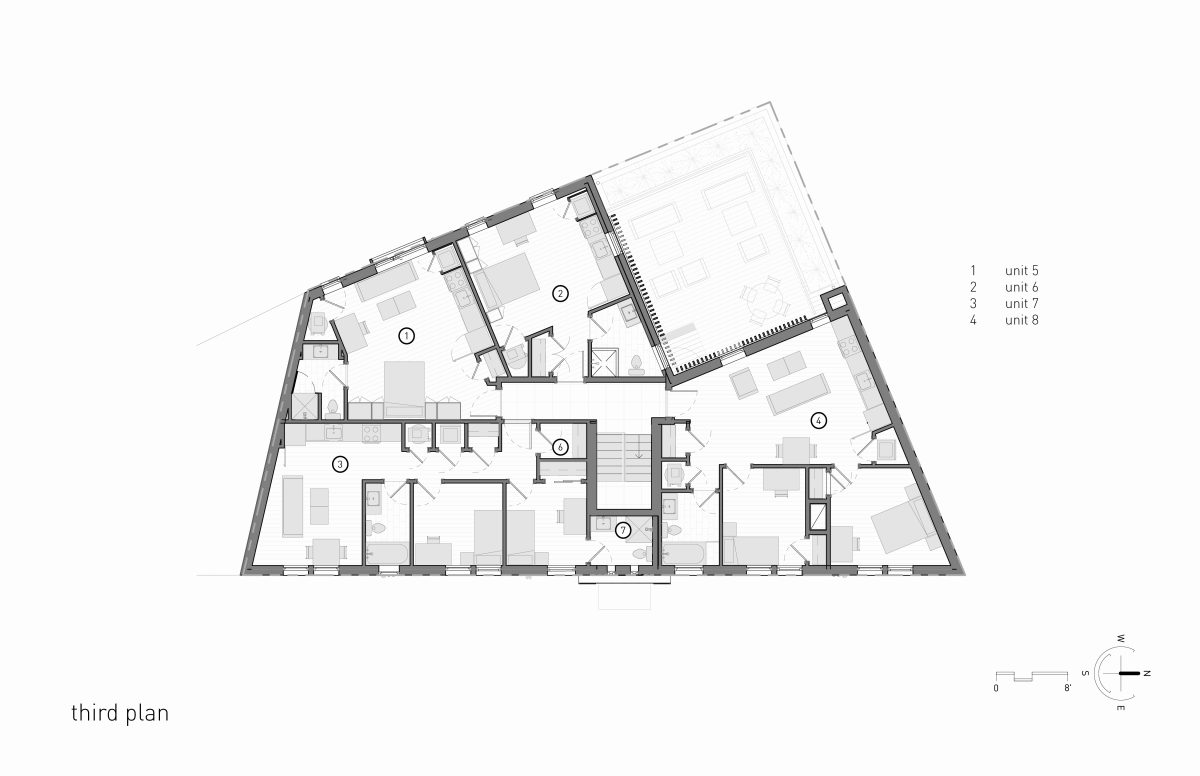
4709 Wisconsin Office to Residential Conversion
In the case of The Schoolhouse, the original building was originally configured as an eight-classroom building. This layout worked well for four apartment units per floor that are located off a central circulation spine.
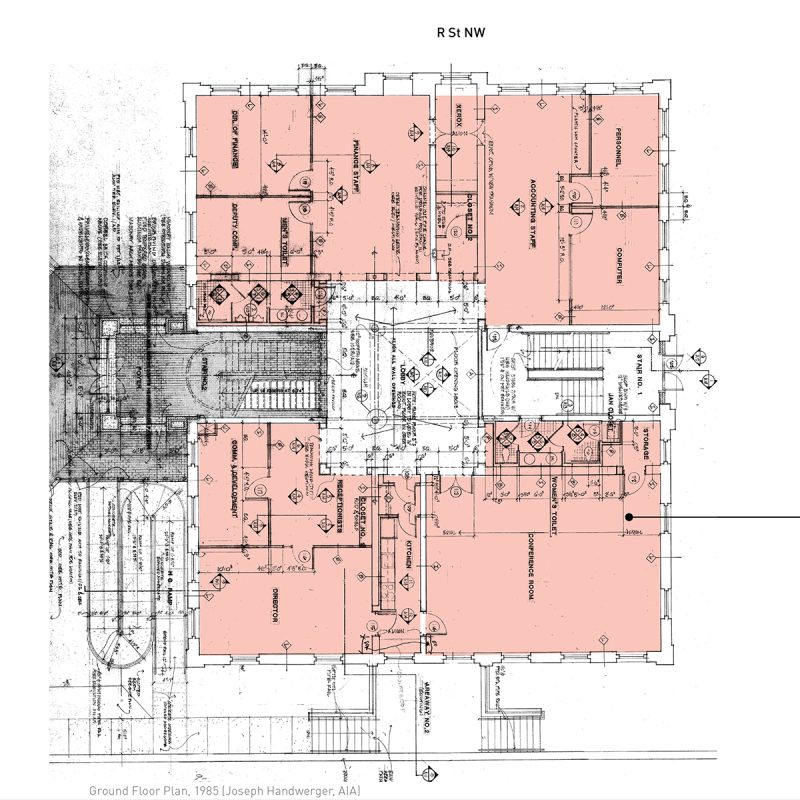
440 R Office to Residential Conversion of a historic school building
The units here are generous and are meant to appeal to a clientele looking for family-sized units as an alternative to a traditional rowhouse dwelling which is more typical of this neighborhood.

School building Unit Stacking Diagram
These two buildings also predate the dominant use of concrete or steel frame construction and are primarily constructed out of wood with masonry bearing walls. This allows for easier alterations and reconfiguration. Even if structural steel components are required to pick up new loads, it’s a lot easier than demolishing rebar, concrete slabs, drop panels or cutting out steel beams and columns. From a carbon sequestration standpoint, they also have a lighter impact on the environment. Adaptive reuse of existing structures is a better environmental option when it can be accommodated.
The Hard Part!
While both projects were recently completed, we would be remiss to not expand on some of the challenges we had to overcome along the journey. On the 4709 Wisconsin Avenue project, the ceiling heights at a little above eight feet, are lower than we would design with a new market-rate building. But the costs to increase the finished clearance would have been prohibitive. Additionally, construction over an existing retail space required the demolition of ceilings and extensive rework to install new systems and plumbing hookups. The change of use also triggered a requirement to fully sprinkler the building, including the existing retail spaces. This resulted in an upgrade of the fire water service for the building, which was an expensive undertaking that put additional financial pressure on the project. On the 4709 Wisconsin Avenue project, the ceiling heights at a little above eight feet, are lower than we would design with a new market-rate building. But the costs to increase the finished clearance would have been prohibitive. Additionally, construction over an existing retail space required the demolition of ceilings and extensive rework to install new systems and plumbing hookups. In addition, the DC Zoning Regulations also mandate a bicycle storage room for any building with eight or more units. On a building of this scale and configuration there is little practical area to provide space for bikes. Therefore, the bike storage room had to be in the middle of the first residential floor of the building, which was not ideal.
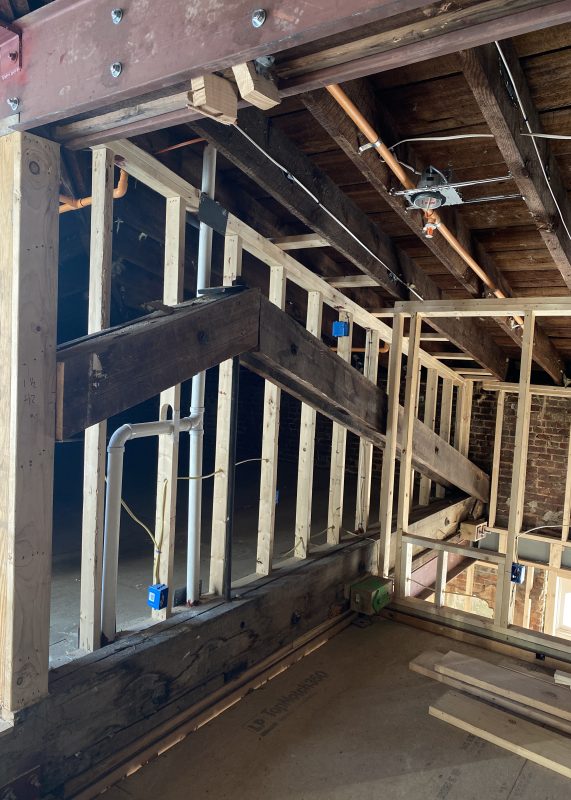
Existing Roof Truss During Construction
The Schoolhouse at the Collection at R Street provided numerous challenges as well. Structurally, the original masonry bearing walls of the building were in a pinwheel configuration. These bearing walls conflicted with ideal unit layouts and ultimately needed to be removed. However, these walls supported girder trusses that acted as supports for the roof and attic floors as well as braced the exterior masonry walls. With the demolition of the bearing walls, these trusses needed to be supported with new posts. Extensive temporary shoring was required to keep the roof intact and the site safe during construction. We incorporated remnants of the truss to celebrate and tell the story of the original building. 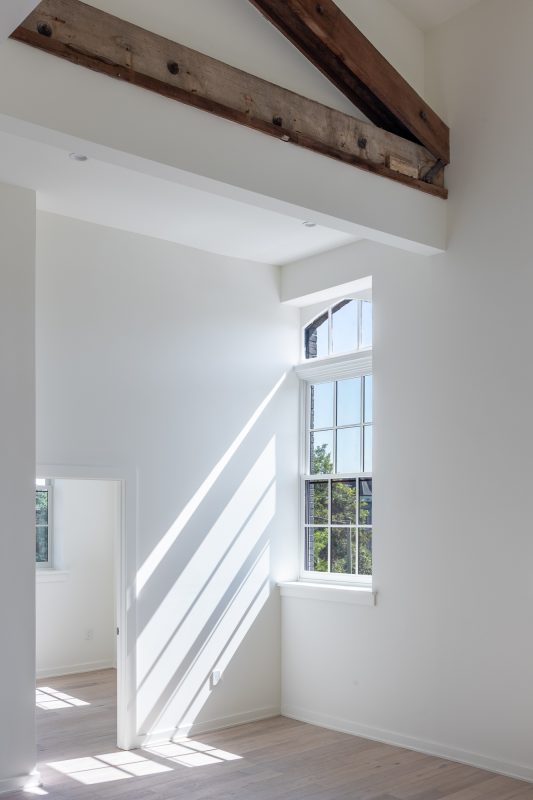 The attic story was converted to bedroom use but needed egress windows. In addition, we sought exterior spaces for the top units. Given the historic landmark status of the building new dormers were not an option, so we created outdoor spaces by carving into the roof with a “reverse dormer”. This arrangement provided exterior access and the carved-out spaces were not visible from the street due to the angle of the line of sight and the parapet. These unique outdoor spaces permitted emergency egress and rescue openings from the bedrooms as well as needed outdoor spaces for the units.
The attic story was converted to bedroom use but needed egress windows. In addition, we sought exterior spaces for the top units. Given the historic landmark status of the building new dormers were not an option, so we created outdoor spaces by carving into the roof with a “reverse dormer”. This arrangement provided exterior access and the carved-out spaces were not visible from the street due to the angle of the line of sight and the parapet. These unique outdoor spaces permitted emergency egress and rescue openings from the bedrooms as well as needed outdoor spaces for the units.
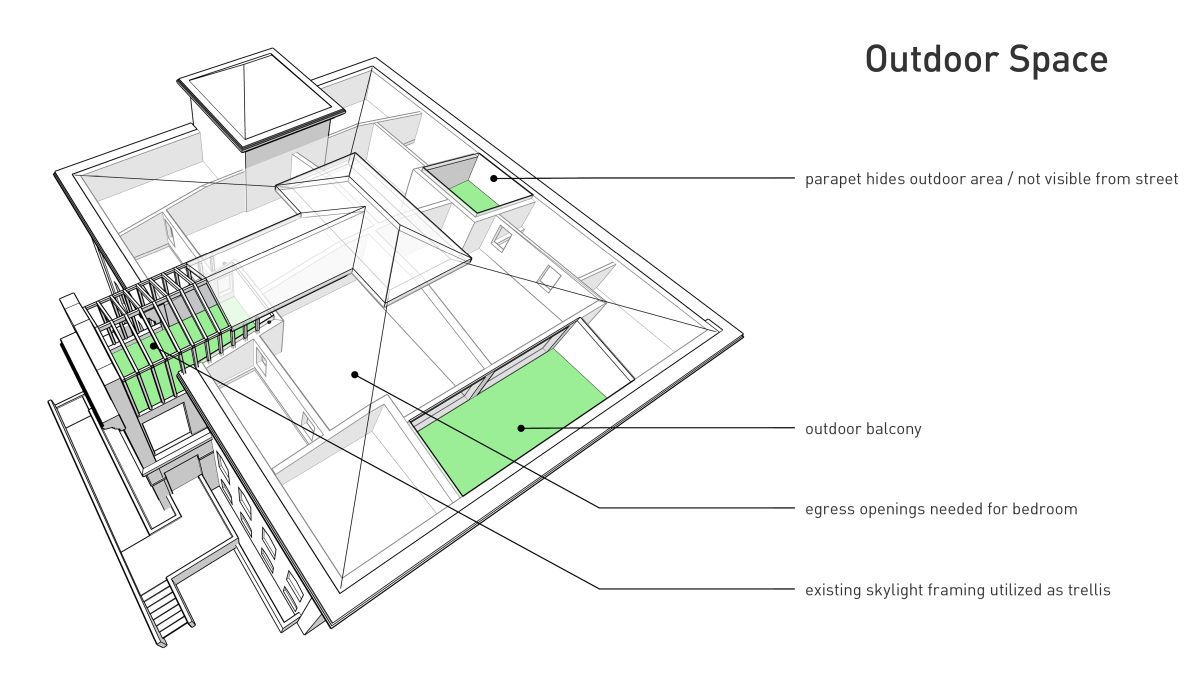
Outdoor terraces carved into roof – office to residential conversion
Competition for outdoor area at grade was complicated. Due to zoning regulations, one parking space is required for two dwelling units was required. This was quite constraining, particularly given the proximity of public transportation. The outdoor mechanical units also needed to be located at grade because the historic roof structure was not able to accommodate the units. Trash storage also compressed opportunities for exterior space at grade, but we did provide occupiable outdoor areaways for three of the four cellar level units. One additional challenge was the limitation on the number of units. In the case of the school building there is a zoning constraint that requires 900 square feet of lot area per dwelling unit, meaning that we were limited to a maximum of 12 units. Given the large amount of buildable area provided within the building, this requirement feels arbitrary. Likely, the structure could have accommodated another 8-10 units. Given the proximity to many neighborhood amenities and robust infrastructure, the limit of units is an unnecessary constraint to the production of sorely needed housing units and forced the owner to build larger units that are priced on the higher end of what the market can absorb.
Conclusions
Office to residential (O2R) conversions can be great projects for adaptive reuse and the introduction of missing middle housing, but it depends on many factors. These particular buildings had good bones, strong financials, and neighborhood amenities to make it work. But even in the best of circumstances, O2R’s can be tough to navigate. It takes the expertise of a talented design team, a great general contractor partner, and a courageous owner to make these projects a success.

